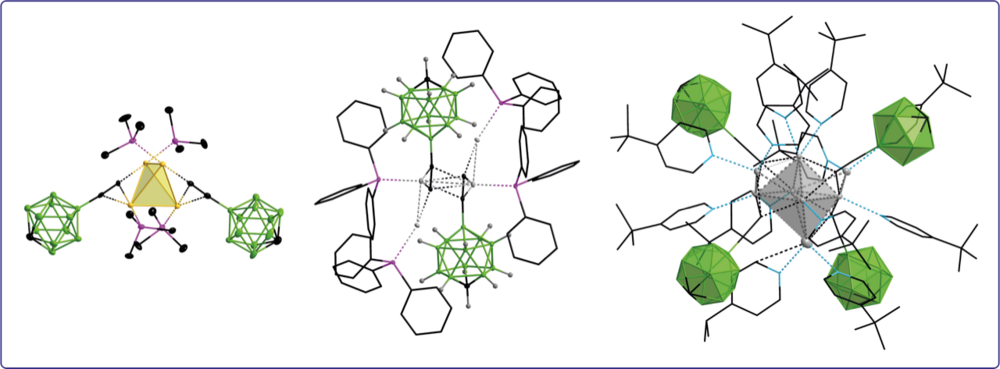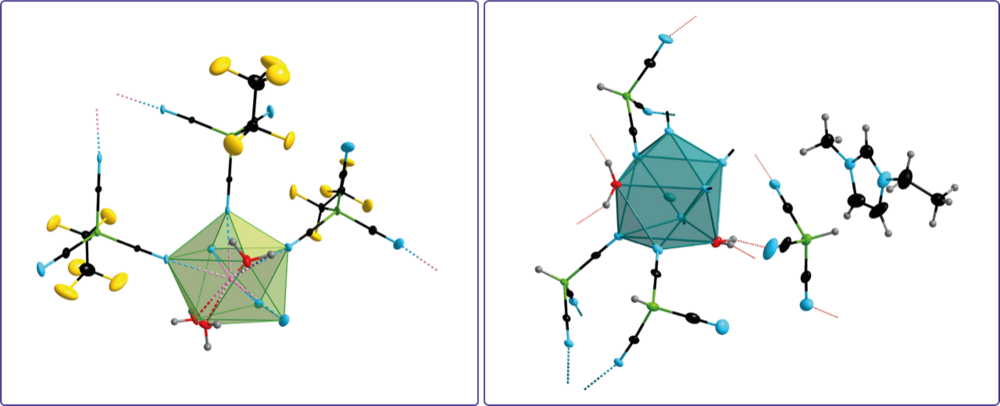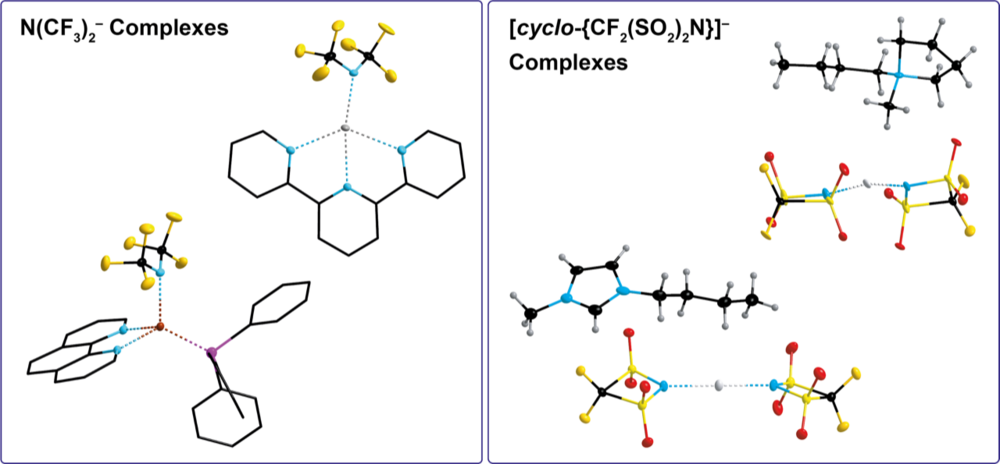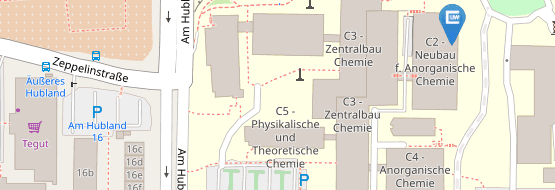Ligand Design & Coordination Chemistry
Anionic N-Heterocyclic Carbenes
N-Heterocyclic carbenes (NHCs) are one of the most important class of ligands with various applications in coordination chemistry (catalysis), organocatalysis, and medicinal chemistry as well as materials science. We are developing anionic NHCs and related cyclic (alkyl)(amino)carbenes (cAACs) that contain borane or phosphorane susbstituents. The properties can be tuned by the borane/phoshorane moiety and the central organic ligand framework.
Publications on this topic:
Boranes Paving the Way to Anionic Cyclic (Alkyl)(amino)carbenes (Ani-cAACs)
L. Zapf, S. Peters, M. Radius, M. Finze, Angew. Chem. Int. Ed. 2023, 62, e202300056.
Tricyanoborane-Functionalized Anionic N-Heterocyclic Carbenes: Adjustment of Charge and Stereo-Electronic Properties
L. Zapf, S. Peters, R. Bertermann, U. Radius, M. Finze, Chem. Eur. J. 2022, 28, e202200275.
1,3-Bis(tricyanoborane)imidazoline-2-ylidenate Anion – A Ditopic Dianionic N-Heterocyclic Carbene Ligand
L. Zapf, U. Radius, M. Finze, Angew. Chem. Int. Ed. 2021, 60, 17974–17980.
σ- and π-Complexes of Boranylethynyl Ligands
Ethynyl-functionalized boron clusters and borate anions are developed as precursors for novel ethynido ligands. The current focus on coinage metal complexes and clusters that exhibit unprecedentedly strong metal···metal interactions and that show interesting photophysical properties.
Publications on this topic:
Carba-closo-dodecaboranylethynyl ligands facilitating luminescent reversed charge-transfer excited states in gold/silver complexes
M. Hailmann, B. Hupp, A. Himmelspach, F. Keppner, P. T. Hennig, R. Bertermann, A. Steffen, M. Finze, Chem. Commun. 2019, 55, 9351–9354.
Unprecedented Efficient Structure Controlled Phosphorescence of Silver(I) Clusters Stabilized by Carba-closo-dodecaboranylethynyl Ligands
M. Hailmann, N. Wolf, R. Renner, T. C. Schäfer, B. Hupp, A. Steffen, M. Finze, Angew. Chem. Int. Ed. 2016, 55, 10507–10511.
Tetrahedral Gold(I) Clusters with Carba-closo-dodecaboranylethynido Ligands: [{12-(R3PAu)2C≡C-closo-1-CB11H11}2]
A. Himmelspach, M. Finze, S. Raub, Angew. Chem. Int. Ed. 2011, 50, 2628–2631.
Coordination Chemistry of Cyanoborate Anions
The cyano group(s) of cyanoborate anions are able coordinate to metal centers. The different types of cyanoborate anions that have been developed by us in recent years lead to coordination compounds, coordination networks, and organic-inorganic hybrid materials with tunable properties.
Publications on this topic:
Hydroxytricyanoborate Anion: Synthetic Aspects and Structural, Chemical, and Spectroscopic Properties
T. Ribbeck, C. Kerpen, C. Schmidle, F. Keppner, J. A. P. Sprenger, M. Arrowsmith, H. Braunschweig, N. V. Ignat’ev, M. Finze, Inorg. Chem. 2019, 58, 16689–16702.
Lanthanide Coordination Polymers and MOFs Based on the Dicyanodihydridoborate Anion
S. H. Zottnick, G. D. Wiebke, C. Kerpen, M. Finze, K. Müller-Buschbaum, Chem. Eur. J. 2018, 24, 15287–15294.
Anhydrous, Homoleptic Lanthanide Frameworks with the Pentafluoroethyltricyanoborate Anion
T. Ribbeck, S. H. Zottnick, C. Kerpen, J. Landmann, N. V. Ignat'ev, K. Müller-Buschbaum, M. Finze, Inorg. Chem. 2017, 56, 2278–2286.
Fluorinated Anionic N-Donor Ligands
Highly fluorinated nitrogen-based anions such as the bis(trifluoromethyl)amide anion N(CF3)2– or the cyclic imide anions [cylco-{CF2(SO2)2N}]– (4cPFSI) and [cylco-{(CF2SO2)2N}]– (5cPFSI) are employed as ligands in coordination chemistry. These anions are weak donors, which results in unusual reactivities.
Publications on this topic:
Insights to structure-property relationships in ionic liquids using cyclic perfluoroalkylsulfonylimides
Y. K. J. Bejaoui, F. Philippi, H.-G. Stammler, K. Radacki, L. Zapf, N. Schopper, K. Goloviznina, K. A. M. Maibom, R. Graf, J. A. P. Sprenger, R. Bertermann, H. Braunschweig, T. Welton, N. V. Ignat’ev, M. Finze, Chem. Sci. 2023, 14, DOI: 10.1039/D1032SC06758G.
Stable and Storable N(CF3)2 Transfer Reagents
L. N. Schneider, E.-M. Tanzer Krauel, C. Deutsch, K. Urbahns, T. Bischof, K. A. M. Maibom, J. Landmann, F. Keppner, C. Kerpen, M. Hailmann, L. Zapf, T. Knuplez, R. Bertermann, N. V. Ignat’ev, M. Finze, Chem. Eur. J. 2021, 27, 10973–10978.






